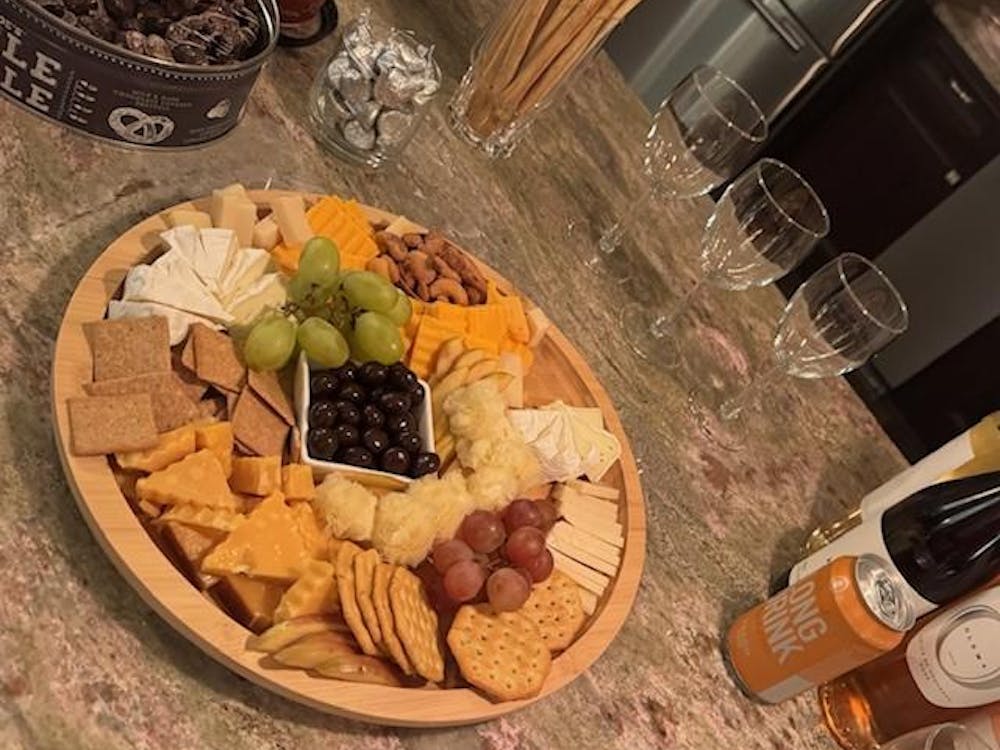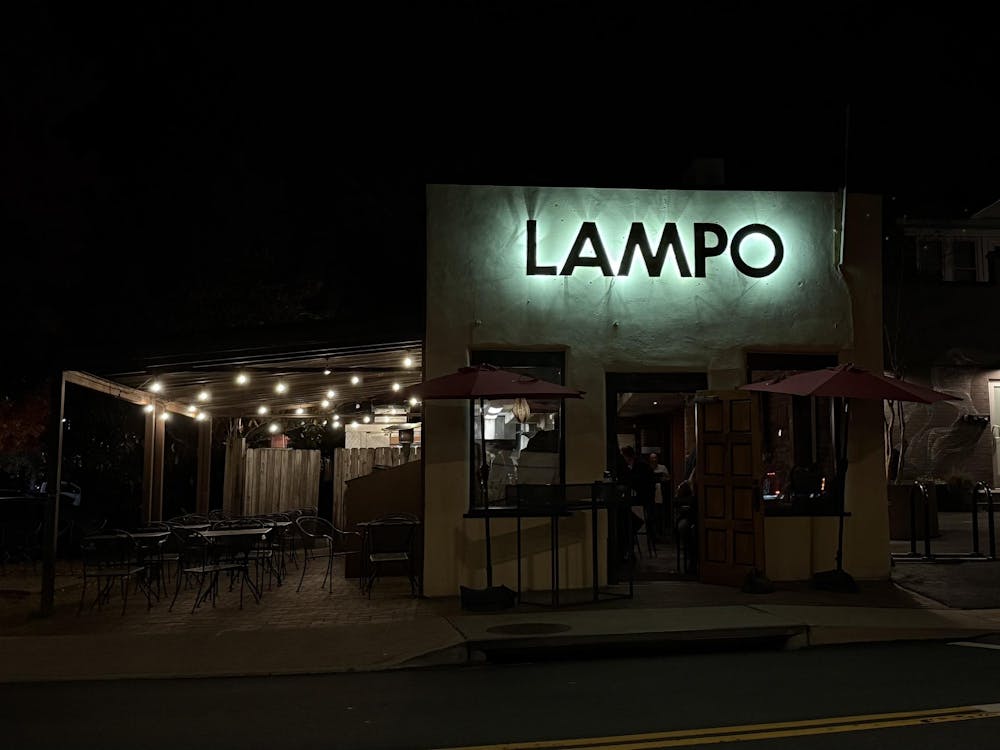You've never seen the Lawn like this before. Sitting on the balcony of Pavilion VII, the newly renovated home of the Colonnade Club, you can understand why professors for nearly two centuries have come here to soak in the Academical Village.
Last month Pavilion VII reopened its renovated doors following a three-year, $4 million architectural restoration. James Murray Howard, curator and architect for the Academical Village, called it the largest and most complex project since the University began its historic preservation program in 1984.
Measuring 11,000 square feet, Pavilion VII is nearly twice the size of any other Pavilion on the Lawn. All sections of Pavilion VII were restored: the original Jeffersonian structure, the addition to the middle section of the building which dates back to 1860 and the third and largest section built in 1912 to provide overnight accommodations for visitors.
"Because of the three eras of construction, which span a century, interior spaces are distinctly different in character," Howard said. "In the current work, we have endeavored to make the three eras compatible with one another, while respecting the wonderful idiosyncrasies of each."
Strolling toward the back of the building on the main floor, creaking wood sings harmonically. A bask of sunlight welcomes those entering the vast social room that overlooks the Pavilion's manicured garden. Here, a 12-by-16 foot skylight, originally built as part of the 1912 addition, has been reinstalled, transforming this previously somber, low-ceilinged reading room into a cordial meeting place. In the evening, the opening seemingly becomes the night sky, as high intensity spotlights shimmer star-like from above.
Structural changes and additions, however, are merely the dawn of the refurbishment.
Furnishing the Pavilion is an ongoing effort, Howard said.
Many period furnishings reflecting Jeffersonian times now are being restored, commissioned and purchased. One significant piece is a 1909 Steinway Type A grand piano given to the University by an anonymous donor who is one of the primary benefactors to the Academical Village restoration. Another noteworthy piece, a Campeachy chair, now sits in a room on the main floor. The chair is a recreation of a type of lounge chair that Jefferson enjoyed using. In the front room stands a restored glass-fronted bookcase dating from the 1820s.
"The furnishings reflect Jefferson's era as clearly as we can, and in a way that is acceptable to those measures," Howard said. "The furniture we find to be compatible, even though it may be of nicer quality these days. All pieces reflect his [Jefferson's] interest in decorative art and high quality American craftsmanship at its best."
Howard also insists that all furnishings serve dual purposes, as both decorative pieces, but also as teaching tools to instruct all passersby to the beauty of Jeffersonian America. Following this me-thod, further plans for Pavilion VII include exhibiting portraits and busts of influential people, as well as displaying 18th-century engravings.
A club with a fresh start
Of all the pavilions on the Lawn, Pavilion VII, home to the faculty's Colonnade Club, is the only one that does not in some way carry out Jefferson's original plan for professors to live in the pavilions and for students to learn in them. Somehow that plan does not seem to matter.
"I try never to answer, 'If he were still alive,'" Howard said. "I think, however, Jefferson would insist the Academical Village is a place for life, that it is not a museum. The Colonnade Club realizes that the building can be so much more than just a private residence."
In 1907, the Colonnade Club was formed by faculty and for faculty with the purposes of encouraging social interaction among professors as well as increasing intellectual enrichment. Today, those same founding principles hold true in an even stronger form. Members can be teachers, faculty members and research faculty members who all pay annual dues. Last year the Colonnade Club boasted 805 members.
"One of our primary goals is ongoing networking and mentoring amongst faculty, something Jefferson planned for by being able to walk from pavilion to pavilion," said Ida Lee Wootten, the president of the Colonnade Club Board of Governors.
With the reopening of the club's doors at Pavilion VII this fall, there is a recommitment of the club's goals and a new initiative to support the academic mission through a number of new programs.
Among these include the Faculty Author Series, a monthly event in which University authors will discuss their most recent works with members and their guests. Peter Onuf, the Thomas Jefferson Memorial Foundation Professor of History, will inaugurate the series on Oct. 9 with a discussion of his most recent book, "Jefferson Empire: The Language of American Nationhood."
Another program for members is a series of day excursions to Virginia's cultural attractions. The first will be the "Virginia Heritage Tour" to Jamestown tomorrow, where William Kelso, the site's head archaeologist, will lead a tour of the dig.
"Clearly the best aspects of the Colonnade Club are its members," Commerce Associate Prof. Mark White said. "I enjoy meeting and interacting with faculty members from other parts of the University, particularly the older folks who have been around for a while and have tales to tell. I've learned a lot from my more senior colleagues - about the institution, about teaching, about integrity, and about life in general."
Yet the club does not restrict professors to their typical intellectual roles.
"Pavilion VII, home to the Colonnade Club, is the only Pavilion that is not actually fronted by a colonnade," White said. "Rather, the square things out front constitute an arcade, an interesting misnomer in its own right, but particularly appealing with the apocryphal story that drunken professors used to return home to the club rooms by feeling their way down the columns around the lawn. When they got to the square columns, they knew they had reached Pavilion VII and could turn in for the night."
One of the most meaningful privileges gained from being a club member besides the faculty relations and mentoring programs is the chance to stay the night in a historic and handsome room in Pavilion VII. Club members can reserve a room for themselves or guests.
"I was lucky enough to stay in an original room in Pavilion VII that Thomas Jefferson designed," Wooten said. "The night I stayed, a full moon rose overhead. It was so special stepping out and seeing a great big golden ball radiating over the Academical Village."
Although Pavilion VII does not serve as a home to a single professor, it invites hundreds through its doors each year.
"With all the efforts of bringing vitality to the Colonnade Club and Pavilion VII," Wooten said, "I honestly believe that the range of activities for faculty amongst the historic charm and beauty will help to enhance the intellectual excitement and satisfaction about being at the University"






